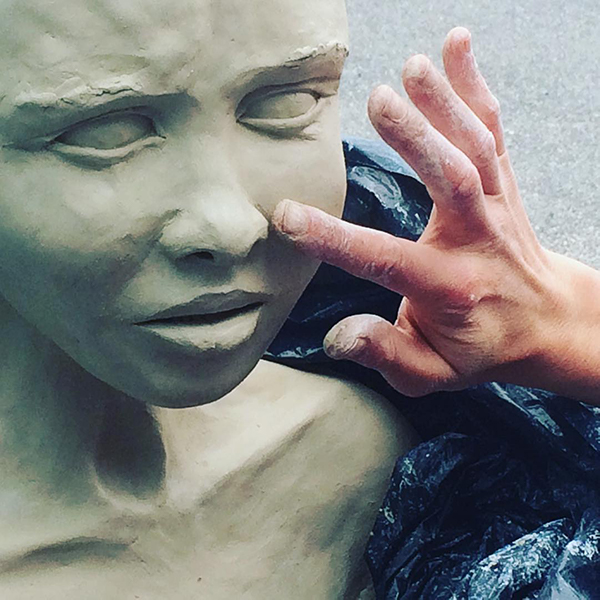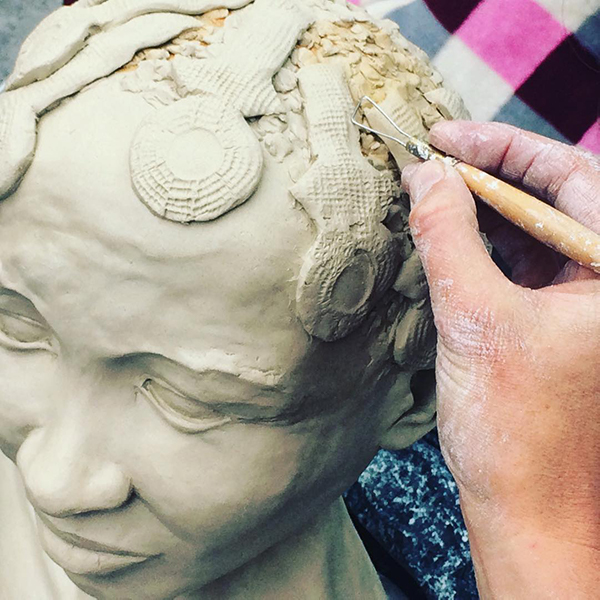Moerteiken bij Nuweland kunstgalerie
English translation below.
De expositie “Moerteiken” van Varenka Paschke in de Nuweland kunstgalerie in Oostzee, Friesland (Nederland).
Tijdens deze expositie zullen zes lichtsculpturen tentoongesteld worden. Het vertrekpunt voor deze serie is de kwetsbare positie van vrouwen in Varenka haar land Zuid-Afrika.
In Zuid-Afrika is de vrouw de ruggengraat van de samenleving, maar bevindt zich over het algemeen in een marginale derderangs positie. Het creëert een land zonder mededogen. De cijfers aangaande seksueel en huiselijk geweld zijn in de afgelopen twintig jaar schrikbarend gestegen. En hoe armer de bevolkingsgroep hoe meer de vrouwen daaronder lijden. De overheid kijkt stilzwijgend toe.
Paschke is gepassioneerd over haar land en de bevolking. De moeilijkheden en de mogelijkheden. Zij probeert mensen een stem te geven die vaak niet gehoord worden. In dit geval staat de positie van de vrouw centraal.
De zes vrouwenhoofden vertegenwoordigen ook zes culturele groepen in haar land die verbonden zijn door de Afrikaanse taal die zij spreken. Ook die taal zelf staat onder druk, vooral vanuit de overheid. De Zuid-Afrikaanse dichter en kunstenaar Breyten Breytenbach schreef daarover het volgende:
“Om ‘n taal dood te maak is om die vrou te vernietig. Dis nie omsons dat ons praat van ‘moedertaal’ en van ‘moedertong’ nie.”
(Een taal doden is de vrouw vernietigen. Dan kun je niet meer spreken van ‘moedertaal’ en ‘moedertong’.)
De Afrikaanse titel van de expositie is ‘Moerteiken’: de moeder als doelwit.
English.
Language as a holistic tool is an integral part of how a child is carried and raised. Mother tongue is the first sounds a baby hears in its mother’s womb thus forming a continual line from the womb to old age as the golden thread of our identity.
The six portraits are from six culturally different backgrounds whose ancestors have all lost their original mother tongues only to be united today in speaking Afrikaans as their mother tongue. The Griekwa, Khoi-khoi and the Bushmen (San being a derogatory term meaning ’cattlethief’) lost their Khoekhoe, Kx’a! and !Xam while the Cape Malay lost their Malay language which was replaced by Arabic Afrikaans. The Cape Coloured was defined as such, because of their multiracial background, so their different languages morphed into Afrikaans which is exactly what happened to the white settlers who moved away from their original languages such as Dutch, German, and French as they mixed and became later known as Afrikaners.
The Afrikaans language is actively being suppressed by removal from educational structures, forcing people to steer away from their mother tongues. All other indigenous languages, apart from politically fashionable lip-service, are relegated to formal insignificance by way of political apathy. This brings with it a massive deterioration of performance in the acquisition and understanding of knowledge, and arguably more importantly an alienation from cultures and identities.
The South African poet and artist Breyten Breytenbach compared killing a language to that of destroying a woman, referring to the deeper meaning of why we speak of a ‘mothertongue’.
“If diversity is a source of wonder, its opposite – the ubiquitous condensation to some blandly amorphous and singularly generic modern culture that takes for granted an impoverished environment – is a source of dismay. There is, indeed a fire burning over the earth, taking with it, plants and animals, cultures, languages, ancient skills and visionary wisdom. Quelling this flame, and re-inventing the poetry of diversity is perhaps the most important challenge of our times.”
Wade Davis
the making of...

